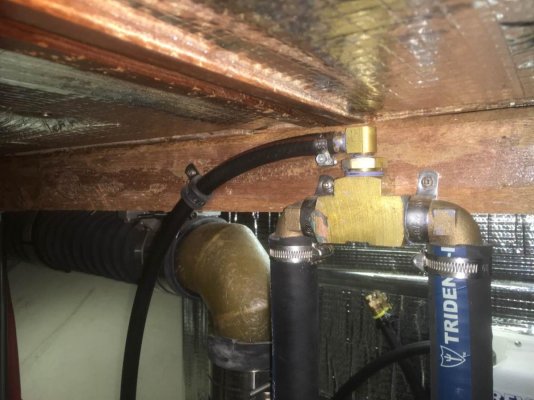JDCAVE
Guru
- Joined
- Apr 3, 2011
- Messages
- 2,903
- Location
- Canada
- Vessel Name
- Phoenix Hunter
- Vessel Make
- Kadey Krogen 42 (1985)
This is a photo of the fitting at the top of the raw water loop between the transmission cooler and the exhaust mixing elbow. The small hose appears to be some sort of "piss line" connected to the lift muffler. I have not been able to identify the type of fitting as I cannot locate it on either the "Western Marine" or "West Marine" websites. I suspect that it might be brass rather than bronze.

Jim

Jim


